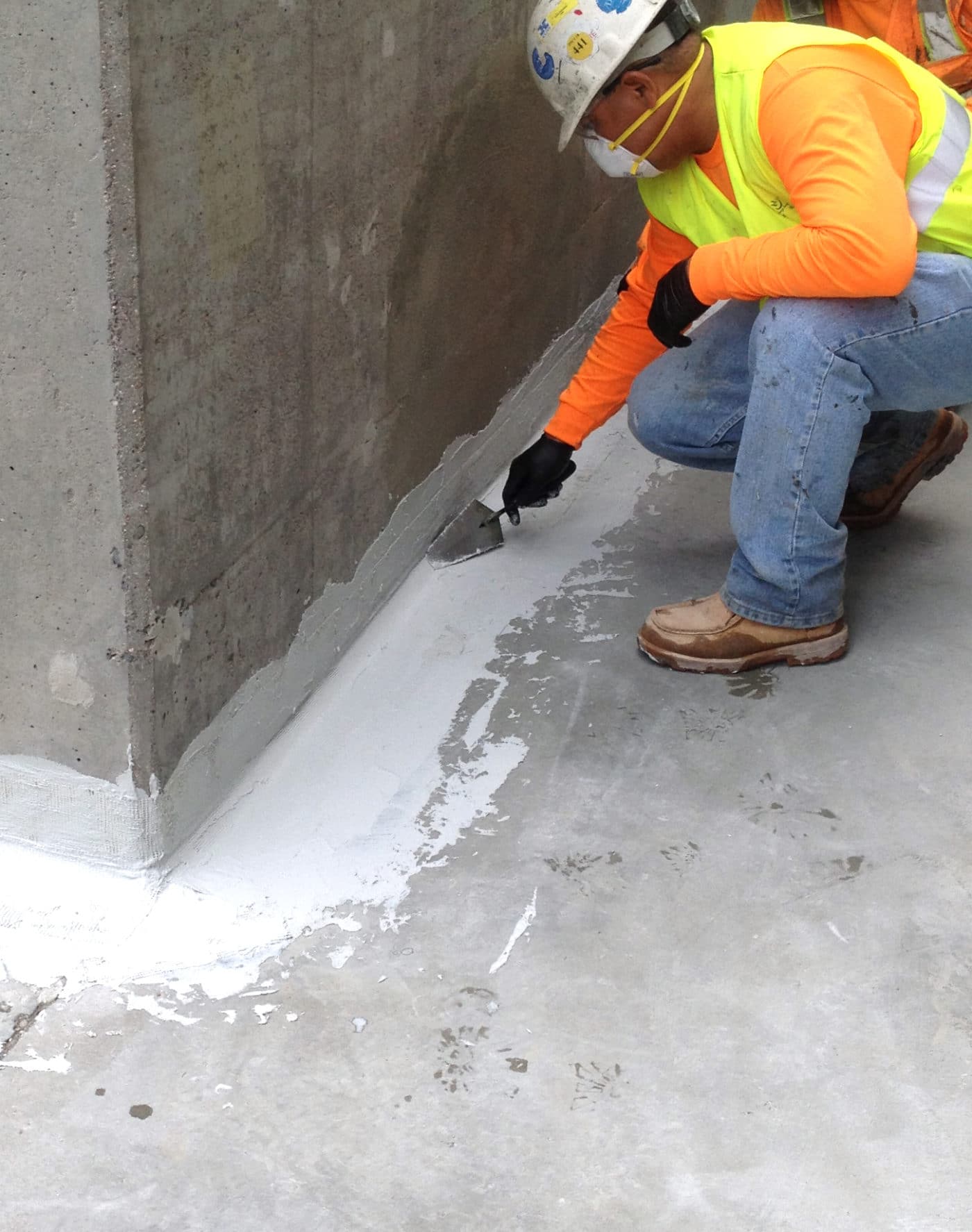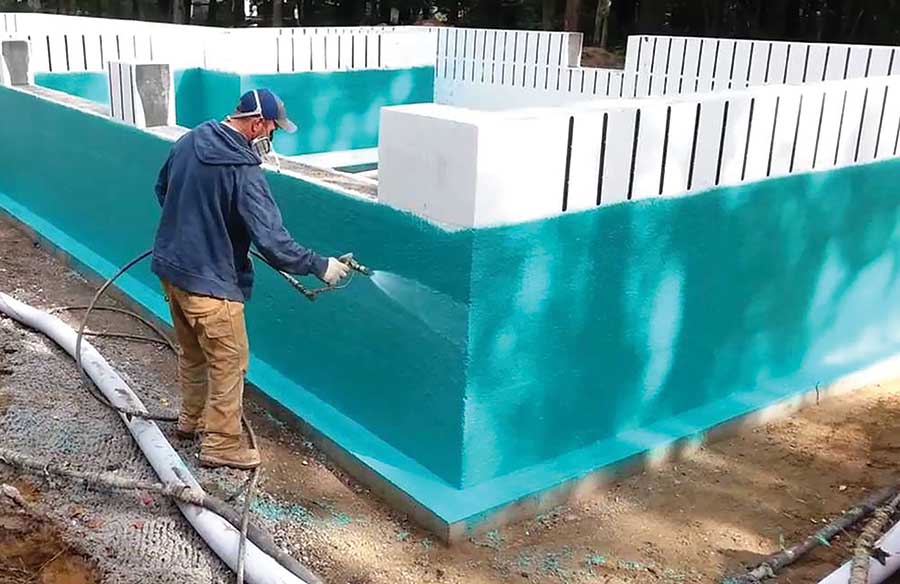Landscape drainage Omaha Ideas That Will Revive Your Outdoor Space
Wiki Article
How Waterproofing Functions: An In-depth Take A Look At Strategies and Technologies
Waterproofing is necessary for securing frameworks from moisture-related damage. It entails various techniques and modern technologies that create barriers against water invasion. Standard methods, such as compressed clay, exist together with modern-day innovations like liquid-applied membranes. Comprehending the nuances of these strategies is crucial for effective application. However, the efficiency of any type of waterproofing remedy pivots not just on the methods made use of yet likewise on recurring maintenance and assessment. What are the vital variables that influence lasting efficiency?Understanding the Basics of Waterproofing
Waterproofing is a vital process that secures frameworks from water invasion, which can lead to substantial damages over time. This approach includes the application of numerous materials and strategies designed to produce a barrier versus moisture. The primary goal is to stop water from passing through surface areas, which can create deterioration, mold and mildew development, and architectural instability.Various factors influence the option of waterproofing method, including the kind of framework, its place, and environmental conditions. Comprehending the physics of water motion and the homes of different materials is critical in picking an efficient waterproofing solution.Effective waterproofing not just safeguards buildings but additionally boosts their durability and stability. Commonly, it is integrated into the style stage of building to assure extensive security. As awareness of water-related problems grows, the relevance of understanding waterproofing principles ends up being significantly clear to designers, contractors, and property proprietors alike.Typical Waterproofing Methods
Standard waterproofing methods have been made use of for centuries, counting on reliable methods and materials to guard frameworks from water damages. One of the oldest approaches entails making use of clay, which, when compressed, creates a natural barrier against moisture. In addition, asphalt, a sticky, black material stemmed from oil, has been utilized for its water-resistant homes, often applied to roofings and foundations.Another technique involves the application of lime-based plasters, which offer a breathable layer that permits wetness to run away while avoiding water access. Thatch roofing, a conventional approach still seen in some societies, offers excellent waterproofing due to its snugly loaded straw layers.Moreover, the usage of stone and block has been famous, as these materials are naturally immune to water when correctly mounted. On the whole, traditional waterproofing techniques stress the significance of selecting suitable materials and building practices to enhance longevity versus water intrusion.Modern Waterproofing Technologies
Improvements in modern-day waterproofing innovations have transformed the method frameworks are safeguarded from water damage. Cutting-edge strategies such as liquid-applied membrane layers and advanced sealers have actually enhanced the effectiveness and flexibility of waterproofing options. These innovations permit for seamless application, minimizing the threat of leakages and ensuring comprehensive protection over complicated surfaces.Moreover, the combination of smart innovations, such as wetness sensors and automated tracking systems, enables real-time evaluation of waterproofing efficiency. This positive technique helps with timely maintenance and reduces long-term fixing costs.Additionally, developments in spray-applied coverings use fast application and superb attachment, adjusting to various substratums while providing robust protection. Methods like polymer-modified systems better improve flexibility and durability, making them ideal for varied environments. On the whole, modern waterproofing technologies not only mitigate water breach however additionally add to the long life and sustainability of frameworks, marking a substantial change in the market.Materials Used in Waterproofing
The performance of waterproofing remedies greatly depends on the products made use of in their application. Different products are utilized to produce barriers against water ingress, each with distinct properties matched for various atmospheres. Frequently used materials consist of membrane layers, finishings, and sealants.Liquid-applied membrane layers, commonly made from polyurethane or acrylic, form a seamless barrier that adjusts to complicated surface areas. Sheet membrane layers, generally constructed from rubber or thermoplastic, offer sturdiness and are excellent for bigger locations. Additionally, cementitious waterproofing materials, composed of cementitious compounds, offer outstanding adhesion and flexibility.Sealants made from silicone or polyurethane are important for joints and seams, making sure thorough security. Innovative materials, such as geo-composite membranes, integrate numerous functions, boosting performance. In general, the option of waterproofing materials is essential in achieving durable and reliable water resistance, tailored to particular project requirements and ecological problems.
Common Applications of Waterproofing
Waterproofing plays an essential function in numerous fields, ensuring the longevity and stability of structures. Common applications include domestic options that protect homes, commercial infrastructure that safeguards companies, and industrial setups that require robust protection versus dampness. Comprehending these applications highlights the significance of waterproofing in preserving both safety and security and performance across various environments.Residential Waterproofing Solutions
Lots of homeowners deal with obstacles with moisture breach, making efficient household waterproofing options vital. Numerous methods exist to resolve this problem, consisting of interior and exterior waterproofing systems. Inside solutions frequently entail the application of sealers and coatings to basement walls, which help prevent water infiltration. Outside approaches normally consist of the installation of water drainage systems and water resistant membrane layers that draw away water away from the foundation.Additionally, home owners might think about sump pumps to eliminate water accumulation and dehumidifiers to regulate humidity levels. Appropriate grading and making use of gutters also play an essential role in taking care of water flow around the home. By implementing these techniques, house owners can useful source substantially lower the risk of water damages and mold growth, making sure a dry and secure living setting.
Industrial Facilities Protection
Efficient waterproofing remedies play an essential role in the security of business facilities. French drain installation Omaha. These methods are important for securing buildings, car parking frameworks, and bridges from water damage, which can compromise structural integrity and bring about pricey repair work. Common applications include the installment of membranes, finishings, and sealers that develop obstacles against wetness infiltration. Locations such as basements, roof coverings, and exterior walls are often focused on to guarantee longevity and longevity. Furthermore, waterproofing systems can enhance power efficiency by preventing water-related concerns that may cause mold and mildew development and deterioration. By applying durable waterproofing actions, homeowner can safeguard their investments and preserve operational effectiveness, eventually adding to the general sustainability of business centersIndustrial Applications Summary
While various markets encounter unique challenges, the need for dependable waterproofing solutions stays a consistent in industrial applications. Industries such as production, building and construction, and power usually run into environments where moisture exposure can jeopardize structural honesty and functional efficiency. In producing facilities, waterproofing is vital for safeguarding machinery and materials from water damages. In building and construction, it safeguards foundations and cellars against groundwater seepage. The power field depends on waterproofing for the protection of devices in hydroelectric plants and offshore frameworks. Furthermore, food handling sectors use waterproofing to assure health and conformity with safety and security standards. On the whole, efficient waterproofing remedies are necessary for boosting longevity, security, and productivity throughout different commercial settings.
Upkeep and Long Life of Waterproofing Solutions
Waterproofing options are created to supply long-term defense against wetness breach, normal upkeep is essential to ensure their performance and long life. Routine inspections play a considerable function in determining potential problems such as splits, peeling, or indications of water damages. Resolving these troubles immediately can stop further deterioration and expensive repairs.Additionally, cleansing the surface of waterproof locations assists remove dirt and debris that might endanger the stability of the waterproofing barrier. It's additionally advisable to reapply safety coatings or sealers as recommended by manufacturers to keep excellent performance. Environmental factors, such as UV exposure and extreme weather, can affect the life expectancy of waterproofing products, making normal analysis vitalRegularly Asked Questions
Can Waterproofing Be Applied in Cold Weather Condition?
The inquiry of using waterproofing in winter raises issues about attachment and healing. Many products may not execute at their ideal in reduced temperatures, demanding careful choice and consideration of particular guidelines for effective application.For How Long Does Waterproofing Usually Last?
The duration of waterproofing efficiency varies based on products and environmental variables. Usually, it can last from five to 10 years, however routine maintenance and assessments are necessary to assure peak efficiency and long life.Is Do It Yourself Waterproofing Effective and Safe?
The efficiency anonymous and safety of DIY waterproofing depend upon numerous aspects, consisting of worldly top quality and application method. While some individuals achieve satisfying outcomes, basement leak others may experience concerns that jeopardize long-lasting defense and architectural stability.What Are the Indications of Failing Waterproofing?
Indicators of failing waterproofing consist of noticeable water spots, peeling off paint, mold and mildew growth, moldy odors, and wetness in walls or ceilings - Yard drainage Omaha. These indicators recommend endangered barriers, necessitating punctual evaluation and potential removal to avoid further damagesExactly how Do I Pick the Right Waterproofing Service Provider?

Report this wiki page